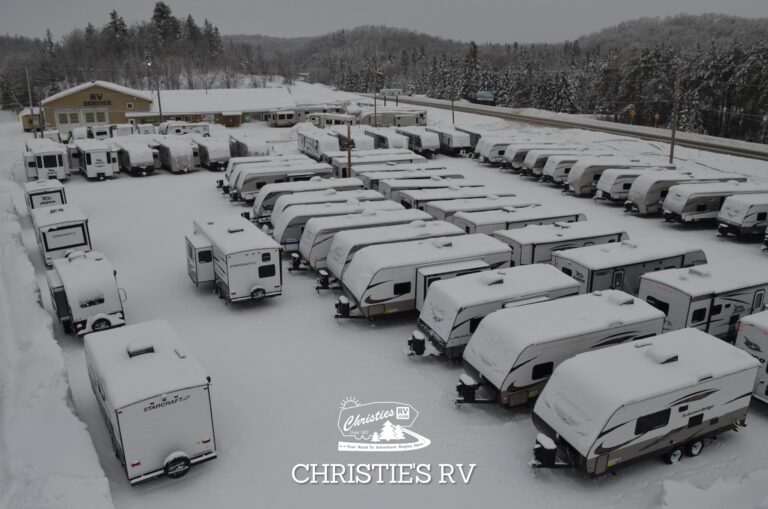Seven Simple Steps To Winterize Your RV
Here are a few steps you should follow before tucking your RV away for the winter. Complete all of these simple steps and when warmer days return, your RV will spring back to life without a hitch.
1. COMPLETELY WINTERIZE YOUR WATER SYSTEM
Frozen pipes run the risk of cracked and leaking pipes. It’s very important to fully winterize your water system to avoid future issues.
All units follow the basic steps:
– Drain all holding tanks. When flushing and draining, start with the black water tank and then the gray water tank. Be careful to remove ALL waste water and scrub out the black tank to avoid odors.
– Once the water heater is cooled, open the pressure relief valve and remove the drain plug. This will allow the water to drain out.
– Make sure the water heater is off and pressure has been relieved, then flush all low-point drains.
– While draining, open all the faucets. Close all faucets and plug drains when draining is complete.
– Bypass the hot water tank to avoid antifreeze getting into it.
– Run plumbing antifreeze throughout the water system by the water pump, ensuring that the anti-freeze flows from every faucet.
– Double-check that the water heating element is turned off and all faucets are closed.
NOTE: Additional winterizing steps will be required with larger RVs equipped with dishwashers, washing machines, etc.
Pro tip: The Owner’s Manual contains unit-specific winterization guidelines.
2. REMOVE YOUR BATTERIES AND STORE IN A DRY PLACE
All Batteries:
Turn off the RV’s disconnect and breaker switches. When disconnecting batteries, remember to remove the negative cable first (“-” the black one).
Also, to make life easier in the long-run, label your cables to simplify reconnecting your RV later.
Single Batteries:
Store fully-charged batteries in a warm, dry place.
**Pro-tip: Do not store batteries on concrete floors. Concrete drains the power from batteries.**
Multiple Batteries:
Larger systems with multiple batteries will have specific storage instructions in the Owner’s Manual. It’s generally recommended to keep those batteries installed. If that’s the case, make sure to still disconnect the negative battery cable.
Every once in a while, check the battery charge level throughout the winter, and recharge when necessary.
3. SERVICE ALL LOCKS AND HINGES
Before storing your RV, take time to lubricate your locks and hinges to avoid creaks, jams, and breaks.
4. CLEAN THE RV INTERIOR
It’s always nice to return to a clean space, so give your RV a deep clean. Remove all food and don’t leave any clothing, bedding, etc. Don’t leave any opportunity for critters making any nests or mold growing anywhere. Sweep, vacuum and sanitize.
5. CLEAN AND DRY YOUR AWNING
Roll out your awning, clean off any leaves, sticks or sap that have settled on the awning. Clean, rinse the surface of the awning and let the fabric dry completely before closing it to avoid mildew.
6. WAX THE RV EXTERIOR FOR PROTECTION
Wash and clean the outside of your RV well. Make sure to check for any splits or cracks and fill/patch them accordingly. Then, with a good quality wax, apply a winter coat to your RV to protect it from any harsh winter weather.
7. COVER YOUR RV WHEELS
If storing your RV outdoors, we suggest covering your wheels to save the tires.
Pro tip: If you’re planning to completely cover your RV, invest in an RV cover with a breathable shell. We don’t recommend covering your RV with a tarp as it tends to trap moisture which could cause roof problems over time.
If you have any tips or tricks that you’ve found make winterizing easier, share below! We want to know!





